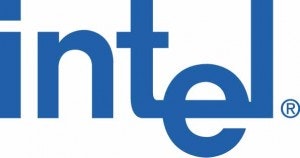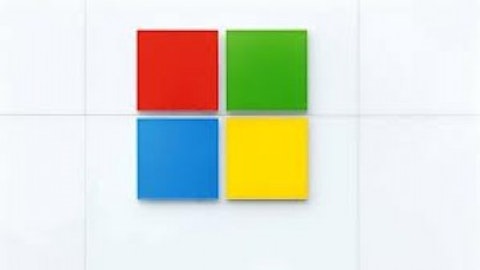
Announced on Businesswire on May 6, Silvermont is a redefined version of the Atom processor, a sluggish and crash-prone processor that I still have on one of my smaller laptops from Samsung. The Silvermont has come about five years after the release of the first Atom processor. One wonders why it took them so long to bring this one to the market; however, when Intel finally does something, it does it really well.
Will Silvermont succeed?
Intel has a great manufacturing process. It currently adopts the 22 nm process. Competitors are still catching up. Many of them are still using contract manufacturers. Ever since Intel incorporated the 3D transistor technology into its Ivy Bridge line of processors, it has been shipping truckloads of processors. More than 100 million till date.
Intel Corporation (NASDAQ:INTC) seems to be on the upsurge when it comes to manufacturing tri-gate 3D transistors. No other manufacturer seems to be in the reckoning. Not until 2014 as I foresee. Intel’s mantra of optimized process technology results in better volumes of production. Intel Corporation (NASDAQ:INTC) certainly does produce a competitive advantage in this regard.
So what makes Silvermont different and why will it succeed? Silvermont is an SoC (System on Chip) design. It is a successor to the Atom line of processors. Silvermont is only for mobile devices and tablets. It will create a paradigm shift in the way smartphones, tablets, and portable devices function. All of these devices will become faster, cheaper and more energy efficient in the future.
Looks like Intel is all set for the 22nm parade with the Silvermont. This Soc will be called Bay Trail and Merrifield. The former is for tablets, and the latter for smartphones. Silvermont will deliver 3x performance with a reduced power consumption that is one-fifth that of peers, according to the press release I hyperlinked above.
Is Intel only an ARM’s length away with the Silvermont SoC?
Arm Holdings always amazes me with their business model. This small British company designs chips, but does not manufacture them. It earns almost all its revenue from licensing these designs to the likes of QUALCOMM, Inc. (NASDAQ:QCOM), Samsung, Texas Instruments and others. As reported by Imagination, licensing revenues are set to fall this year due to what they claim is “higher levels of uncertainty due to structural and organizational changes among a number of semiconductor partners in various regions. “ However, ARM, being the dominant player in the licensing market, will actually see a small rise in its chip royalty rate, according to Canaccord’s Matthew Ramsey, as seen on a Barron’s article.
For someone like QUALCOMM, Inc. (NASDAQ:QCOM), which is by far the largest maker of mobile SoCs, the process is that they will license their design from ARM, and then build on to that structure. Qualcomm is all over the mobile segment, leading the mobile device GPU market with over 25% of the market share last year. Its quad-core APQ8064 processor is there in the latest Google Nexus 7, while it is also present in the upcoming Nokia Lumia 925. However, while QUALCOMM, Inc. (NASDAQ:QCOM) does manufacture its chips, and also modifies the ARM design, it still licenses it from them. This results in some lack of flexibility in the design stage.
Intel Corporation (NASDAQ:INTC), on the other hand, has an end-to-end model; it designs, manufactures, markets, and sells its own chips across the board. This makes it a little slow to catch up with its smaller and more efficient competitors, but once it does, it does that with a vengeance because of its depth of competency, which lowers costs for the end-user. This is what I expect to see for the Silvermont.
Don’t count your chickens yet. I have a feeling that by this year-end the Bay Trail and Merrifield will be part of many tablets and smartphones. Understandably, Intel is going to be several notches ahead in the competition with ARM. But I don’t know for sure how long this competitive advantage will last. Because ARM Holdings plc (ADR) (NASDAQ:ARMH) is going the 20nm way sooner or later. In fact, the 64-bit, ARMv8 Cortex-A57 will be manufactured using the 20nm process. And so will be the ARM Cortex-A15. All this will happen by 2014 if ARM is really able to execute its plan. According to this study, which helped me understand the technology; Intel’s drive towards lower nanometer processing will create a rivalry across the sector that will only led to better processors with boosted performance, while trying to achieve lower power consumption figures.
The competition is only going to get fiercer. ARM Holdings plc (ADR) (NASDAQ:ARMH) is set to move to 16nm manufacturing by 2016. Ok, now for all Intel investors, here’s good news. At Intel Corporation (NASDAQ:INTC), plans have been pinned for the Airmont line of processors that will be manufactured using the 14nm process! Phew! Three cheers for Moore’s Law! Intel is not just competing with ARM Holdings plc (ADR) (NASDAQ:ARMH). With Silvermont, it competes with NVIDIA and Qualcomm too. But the fiercest has to be with ARM.
I foresee a lot of trends based on this. Windows 8 tablets could make a comeback. ARM Holdings plc (ADR) (NASDAQ:ARMH) has traditionally dominated the Android smartphone market. This could soon change. Every other Android smartphone could ship with a Silvermont SoC. Given Intel’s penchant for competing at the price point, Android smartphone prices could dip. All the more reason for smartphone manufacturers to turn to the Silvermont SoC to compete on price.
Growth forecast – Smartphone and Tablet market
Research firm Gartner has estimated that tablet sales will increase by 98% this year! So you are essentially looking at more than 300 million units of tablets being shipped by 2016. Smartphone sales have increased by 44% this year when compared to last year. Going by the impressive line-up of smartphones that are going to be released this year from several big manufacturers, this statistic is only going to increase.
Gartner has indicated a healthy trend in smartphone penetration as well. It is pegged at more than 50% for the next few years. So it is clear that the Silvermont has a lot of market share up for grabs.
Table 1
Worldwide Devices Shipments by Segment (Thousands of Units)
Device Type | 2012 | 2013 | 2014 | 2017 |
PC (Desk-Based and Notebook) | 341,263 | 315,229 | 302,315 | 271,612 |
Ultramobile | 9,822 | 23,592 | 38,687 | 96,350 |
Tablet | 116,113 | 197,202 | 265,731 | 467,951 |
Mobile Phone | 1,746,176 | 1,875,774 | 1,949,722 | 2,128,871 |
Total | 2,213,373 | 2,411,796 | 2,556,455 | 2,964,783 |
Source: Gartner
Table 2
Worldwide Devices Shipments by Operating System (Thousands of Units)
Operating System | 2012 | 2013 | 2014 | 2017 |
Android | 497,082 | 860,937 | 1,069,503 | 1,468,619 |
Windows | 346,457 | 354,410 | 397,533 | 570,937 |
iOS/MacOS | 212,899 | 293,428 | 359,483 | 504,147 |
RIM | 34,722 | 31,253 | 27,150 | 24,121 |
Others | 1,122,213 | 871,718 | 702,786 | 396,959 |
Total | 2,213,373 | 2,411,796 | 2,556,455 | 2,964,783 |
Source: Gartner

